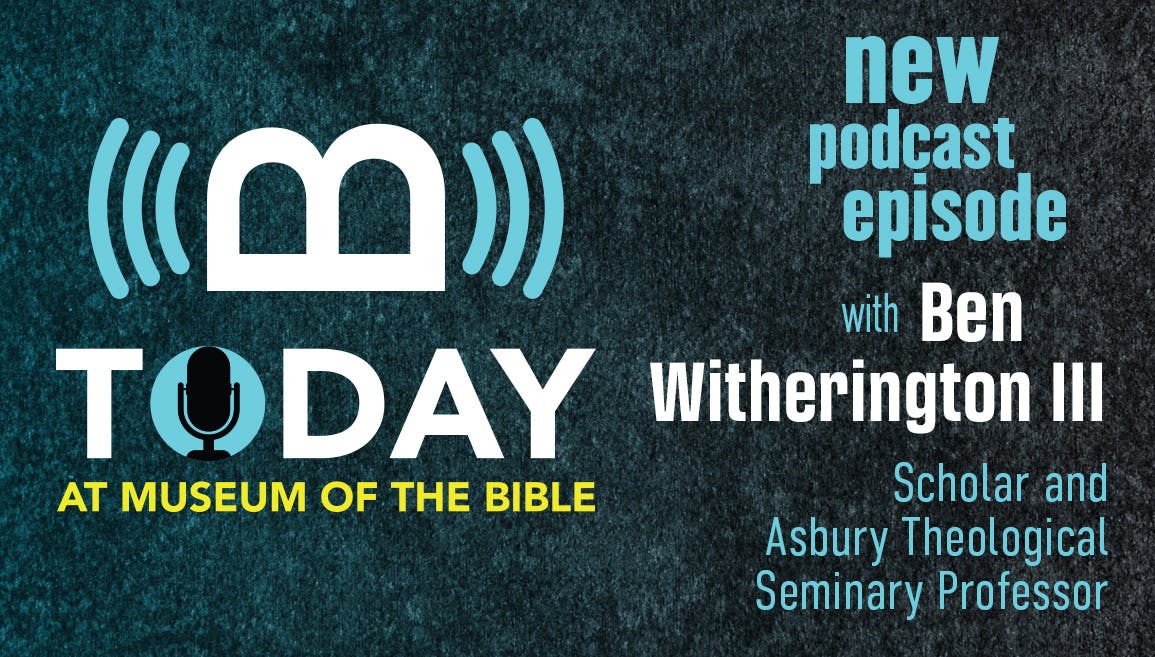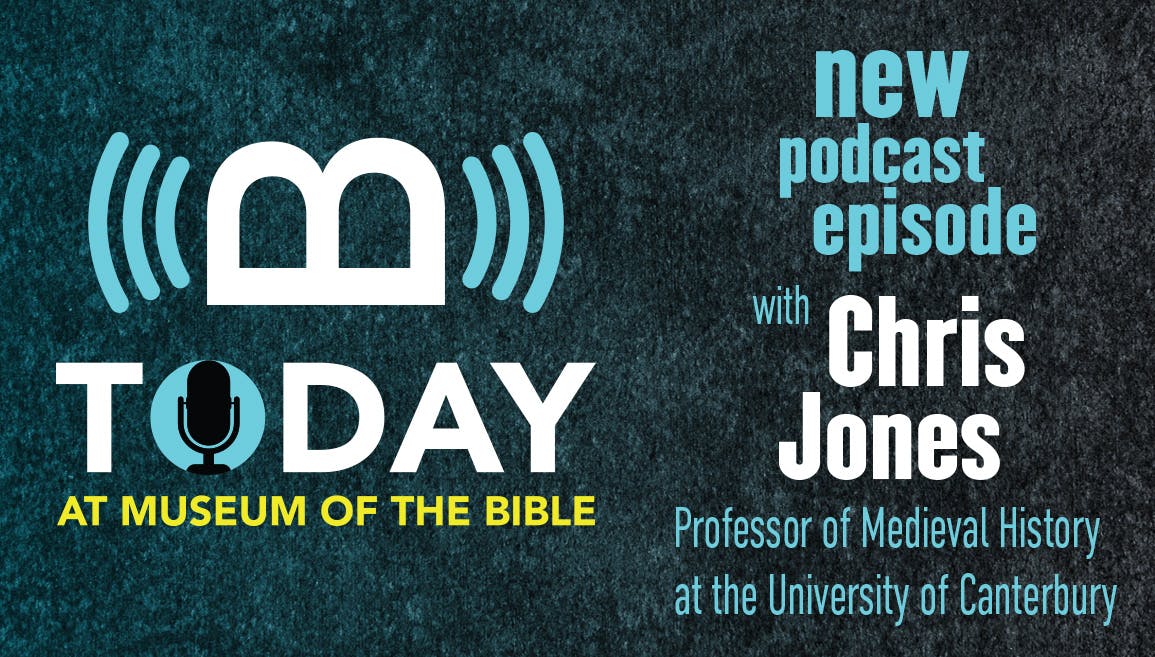Beyond the Walls: The Basilica of the National Shrine of the Immaculate Conception
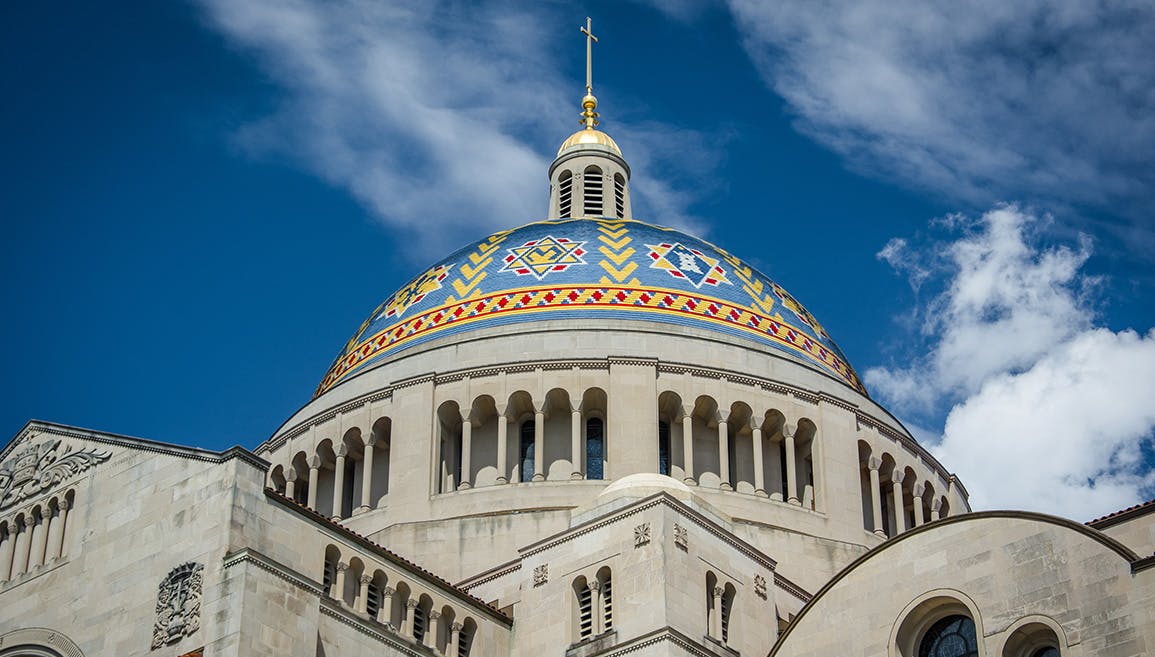
Our Beyond-the-Walls team, consisting of a photographer, a curator, and an editor (and this time an intern, too), went out this past June to discover more places in Washington, DC, where the Bible is hiding in plain sight. This time, however, we chose a place where the Bible isn’t so much hiding in plain sight as it IS the sight. In this case, the largest Catholic church in America — the Basilica of the National Shrine of the Immaculate Conception. While places of worship may seem an obvious place for the Bible to be on display, discovering every way the Bible has shaped and influenced the architecture of sacred space takes investigation. So, naturally, we signed up for a tour of the basilica.
One of the most beautiful things about America is the diversity it brings together into a single whole — e pluribus unum as the phrase goes. Washington, DC, reflects this. The city celebrates and commemorates the many cultures and histories that together make up American culture and history, and it invites citizens and foreigners alike to experience that culture and history through the many museums and monuments that dot the district. The Basilica of the National Shrine of the Immaculate Conception captures the diversity of American history and culture in a similar fashion. But to understand how it does so, it’s helpful to first unpack the meaning of its long name.
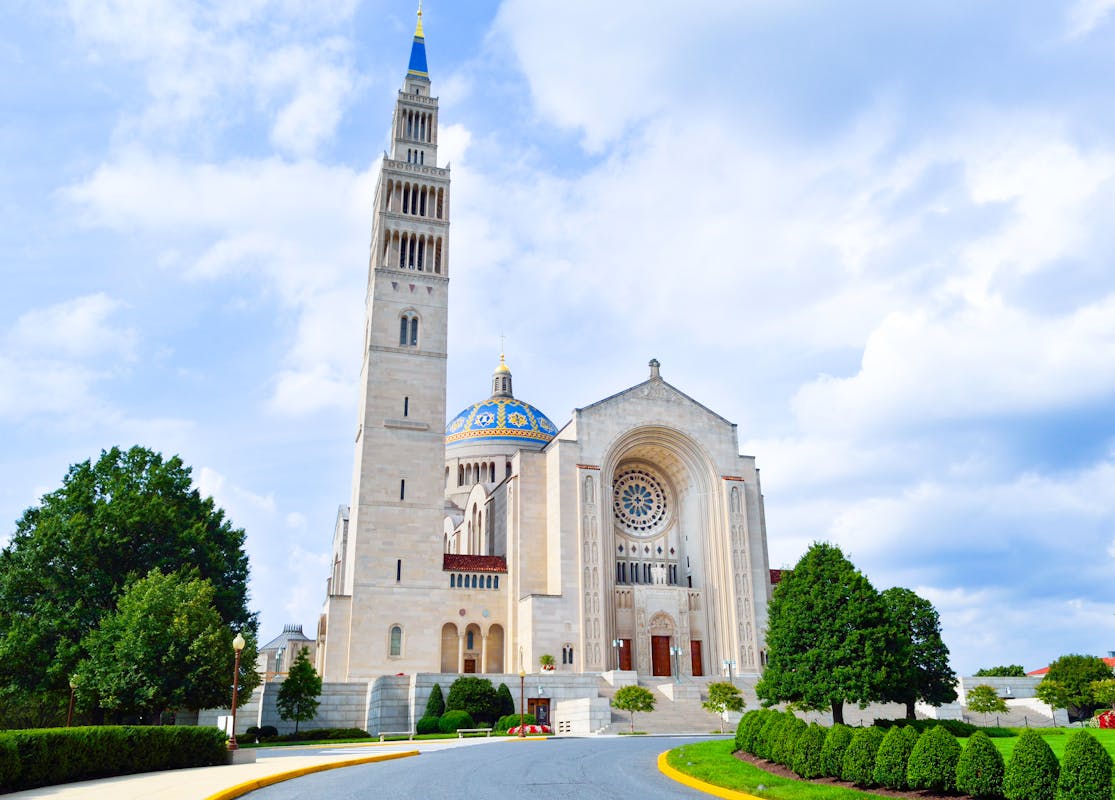
Figure 1: An exterior view of the basilica. The 13 statues flanking the doors and the great arch are of patriarchs and prophets from the Old Testament paired with the apostles and disciples of the New Testament.; at the top are Peter and Paul. Photo by AnLuNi. Image used under license from Shutterstock.com.
The title of (minor) basilica, which the shrine received in 1990 from Pope Saint John Paul II, indicates the historical “importance, dignity, and significance” of the place as a site of worship and devotion. The site is national because it was approved by the United States Conference of Catholic Bishops, while the title shrine indicates it is a place of pilgrimage, not simply a local parish church. Finally, the Immaculate Conception refers to the title for Mary under which she was named the patroness of the United States in 1846, a decision ratified by the pope in 1847. This title refers to the doctrine of Mary’s own immaculate conception, not the immaculate conception of Jesus. Thus, the Basilica of the National Shrine of the Immaculate Conception is a significant site of pilgrimage to Mary, the mother of Jesus, the patron saint of America.
To be the patron saint is to offer protection and guidance to the people under one’s care. And to represent the diversity of America Catholics, the basilica is filled with chapels to Mary for each of the different nationalities and ethnicities that make up the American population. Chapels from countries on every continent fill the lower level of the basilica, each venerating Mary in unique ways. The architecture of every chapel relies heavily on the Bible, incorporating stories and prophecies into these sacred places of devotion. Chapel after chapel, one sees a form of Mary that captures the essence of the people it represents: Hungarian, African, Vietnamese, Croatian, Filipino, Italian, American Indian, Maltese, and so many more. They are brought together in the basilica, just as they are brought together in America. The experience provides a humbling reminder of our plurality and our unity.
But the chapels are almost nothing compared to the central place of worship on the main level. It isn’t enough to say that the Great Upper Church, as the area is known, is saturated with biblical imagery. It is biblical imagery, verily, the Word has become stone. When one enters the Great Upper Church, the outside world vanishes, and you are transported into the Bible itself through a series of massive domes, which draw you in.
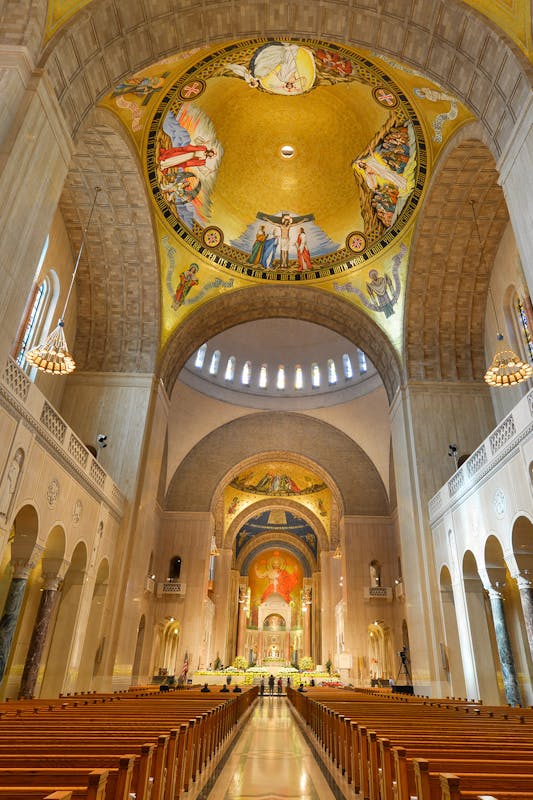
Figure 2: Looking down the nave, one can see the series of domes, leading the worshipper to the final mosaic of Christ in Majesty. The dome at the top of the photo is The Redemption dome. This picture was taken before the Trinity dome mosaic was created, but you can see some of the 36 windows that form its base. Photo by Orhan Cam. Image used under license from Shutterstock.com.
The first is the dome of The Incarnation, when the Word was made flesh. The dome depicts four biblical scenes — the annunciation, the nativity, the miracle at Cana, and the Transfiguration — each one a story that shows Jesus’s divinity. The four pendentives (the curved triangular space formed where arches meet beneath a dome) complementing the dome show people associated with the biblical prophecies expecting Jesus: the prophets Jeremiah, Isaiah, and Micah, and the matriarch Sarah. The dome is ringed by the words of John 1:14: “And the Word became flesh and made his dwelling among us, and we saw his glory, the glory as of the Father’s only Son, full of grace and of truth.”
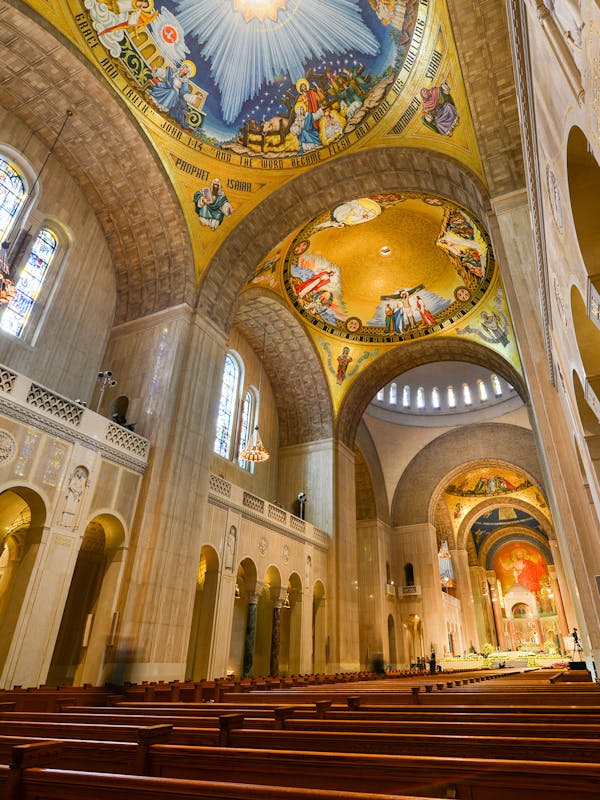
Figure 3: At the top is a portion of The Incarnation dome, showing the annunciation to the left and the Nativity at the bottom. In the pendentives are the prophet Isaiah and the matriarch Sarai. Photo by Orhan Cam. Image used under license from Shutterstock.com.
The next dome is The Redemption. Here, too, are four scenes showing Christ’s redemptive acts: Christ’s temptation in the desert, the crucifixion, the descent into hell, and the resurrection. Between the scenes are biblical figures who highlight redemption: Lazarus, Simon of Cyrene, Joseph of Arimathea, and Mary Magdalene. Revelation 5:9 encircles the dome: “Worthy are you to receive the scroll and to break open its seals, for you were slain and with your blood you purchased for God those from every tribe and tongue, people and nation.”
From incarnation to redemption, now the viewer is drawn to the central dome: The Trinity. Set atop the central axis, it symbolizes the core teaching of the church — “The mystery of the Most Holy Trinity is the central mystery of the Christian faith and life.” On opposite sides of the golden dome are depicted the Immaculate Conception — Mary as Theotokos, the “mother of God” flanked by angels — and the Trinity. God the Father, holding the world, and God the Son, bearing his cross, are seated, while God the Holy Spirit, in the form of a dove with a radiant sun behind it, hovers between the two.
A series of figures consisting of the archangels Michael and Gabriel, 18 saints, and two choir angels ring the edges of the dome, which sits on a series of 36 windows. Twelve of these, or four sets of three, are dedicated to the Trinity. One set depicts the Trinity as the Lamb of God, a hand reaching down from the clouds, and a dove; another depicts it with the Chi-Rho (the first two letters spelling Christ in Greek), the tetragrammaton on a Star of David, and flames of the Holy Spirit. The dome’s pendentives depict the four Evangelists, who wrote the story of Jesus’s life. The two domes leading to this, and the two domes that follow, are united by the dome of The Trinity, the central mystery.
The Descent of the Holy Spirit, the next dome, moves from heaven to earth. More than a hundred blazing red “tongues of fire” descend across the dome onto groups of people, reflecting the story of Pentecost in Acts. The main group consists of Mary surrounded by six of the apostles, the other six standing in smaller groups to the right and left. But across from Mary and the apostles are ordinary humans. All receive the gifts of the Spirit. The scenes are encircled by biblical verses: Acts 2:33, Joel 1:2, Psalm 103:30, and Wisdom 7:24–8:1. In the pendentives are generic figures from Africa, Asia, America, and Europe, “symbolizing the sanctification of the world.”
The final dome shows the end of the earth and is called, The Triumph of the Lamb. Set at the center, on a dark blue background filled with stars, is the lamb with seven horns, seven eyes, and the open scroll from Revelation 5. Four groups of six men, the 24 elders, stand at each of the cardinal points around the lamb. Together, they form a Greek cross, the arms being equal. Between the arms are the four living creatures of Revelation 4 — a lion, an eagle, an ox, and a man — and in the corners are four angels, each holding a quarter of the earth. Wreathing the display are verses from the song sung by the multitude in Revelation 5: “Worthy is the Lamb that was slain to receive power and riches, wisdom and strength, honor and glory and blessing.”
As one’s eyes fall downward from the series of domes, they are transfixed by the eyes of Christ himself, seated in glory. Christ in Majesty, the final scene the viewer sees, is perhaps “the largest mosaic of Jesus in the world.” Jesus sits upon a rainbow throne, wearing a toga comprising 300 different shades of red and 200 different shades of gold that signifies him as Christ the Redeemer. The image is inspired by Isaiah 63:1–2, “Who is this that comes … in crimsoned garments … arrayed in majesty.” Jesus sits as judge, seen in the raised right eyebrow, but also as the Good Shepherd, denoted by the relaxed left eyebrow. Behind him the flames represent the presence and glory of God, drawing from Isaiah 66:15, while his outstretched arms symbolize his grasp of the universe while also being reminiscent of prayer, evoking Hebrews 7:25, that “he lives always to make intercession for them.” The viewer’s journey from the incarnation to the final judgment is complete. As the viewer’s eyes fall from the last dome to the mosaic of Christ in Majesty and then at last to the altar at eye level, they return to earth. The architecture’s effect is complete.
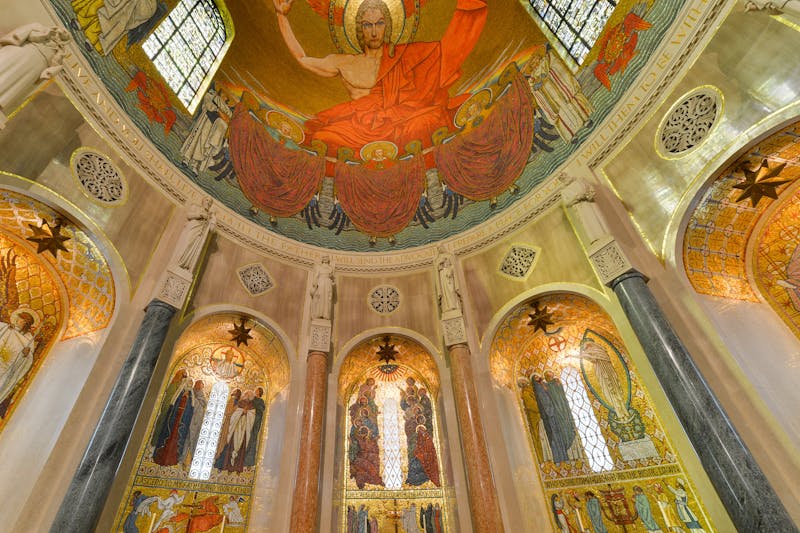
Figure 4: Christ in Majesty mosaic. At 3,610 sq. ft., it's likely the largest mosaic of Jesus in the world. It has 3,000–4,000 different shades of color. Photo by Orhan Cam. Image used under license from Shutterstock.com.
Hundreds of more examples of the Bible’s influence and presence in the basilica could be detailed. The basilica brings together all of the Bible, enveloping worshippers and inviting them to stand among the saints and biblical figures as participants in the New Testament narrative. The basilica also brings together all of America, creating a beautiful and powerful unity from the diversity in our population. As such, it is of the country and the capital. And it’s worth touring the next time you are in DC.
If you are looking to learn more about how the Bible has informed the architecture of the sacred, we encourage you to visit Museum of the Bible. In addition to our permanent display on the Bible’s influence on architecture, we are currently hosting a special exhibition from the Vatican about the transformation of Saint Peter’s Basilica over time. The exhibit features a series of historical prints from many of the famous architects who designed the basilica, including Sangallo, Michelangelo, and Bernini, among others. And when you’re done at the museum, we hope you’ll take advantage of our new map showing the location of sites in the district where the Bible’s influence can be seen, including the Basilica of the National Shrine of the Immaculate Conception.
By Jared Wolfe, Editorial Manager
